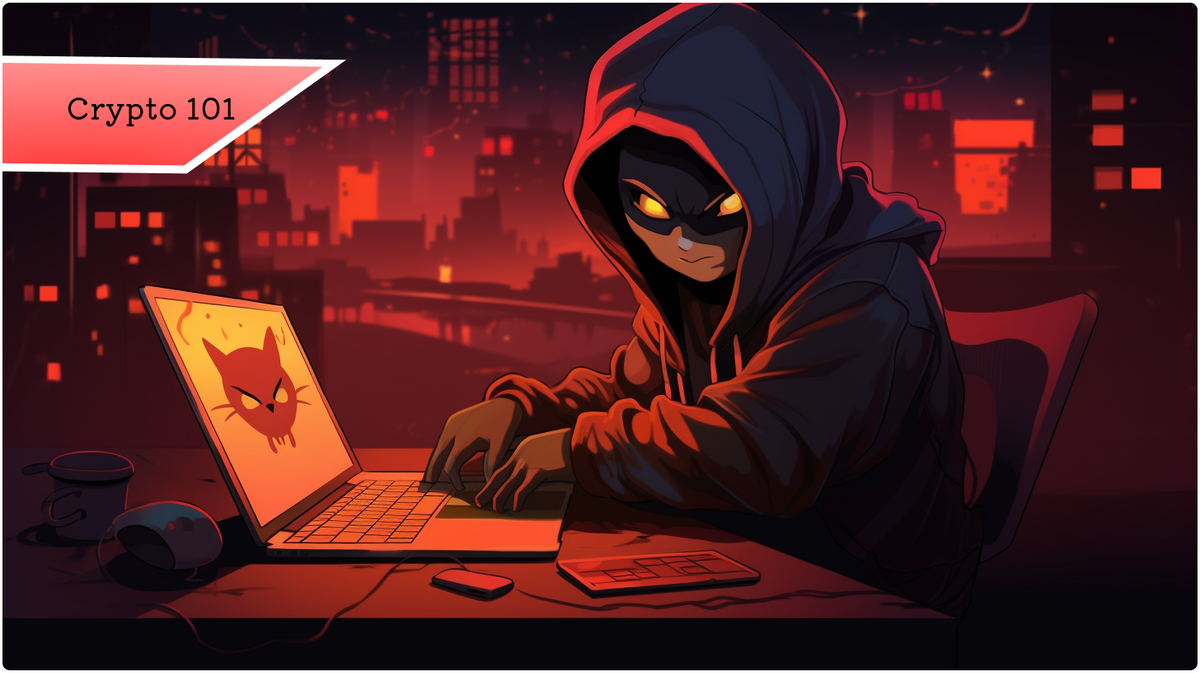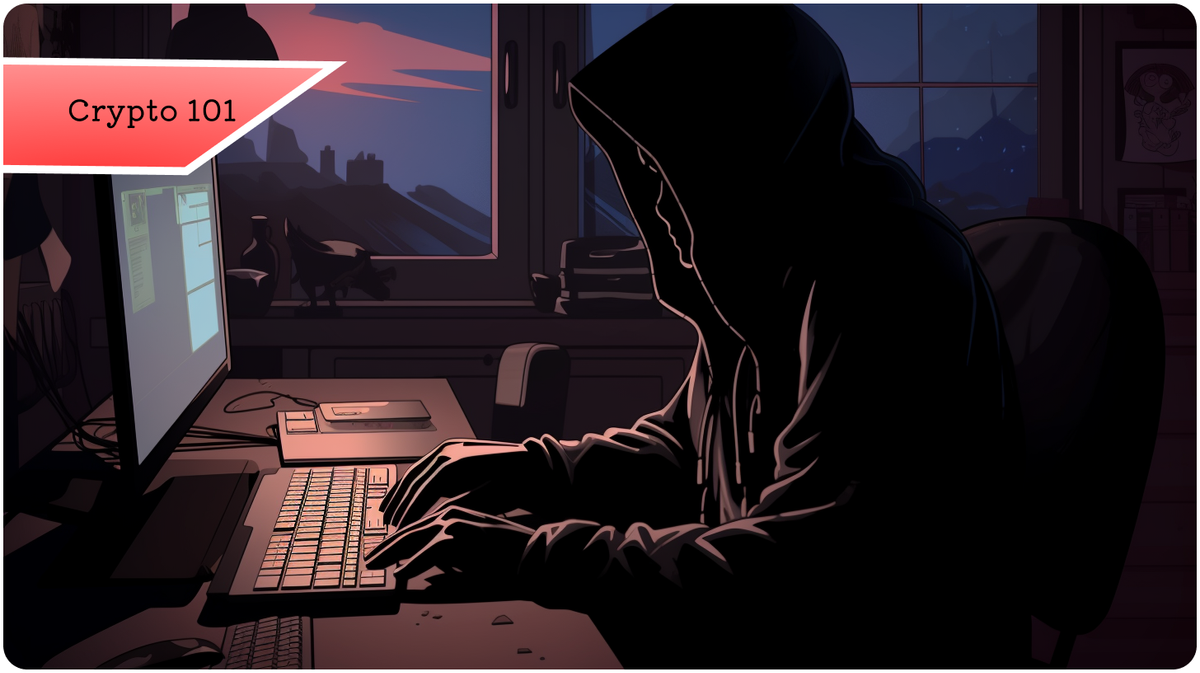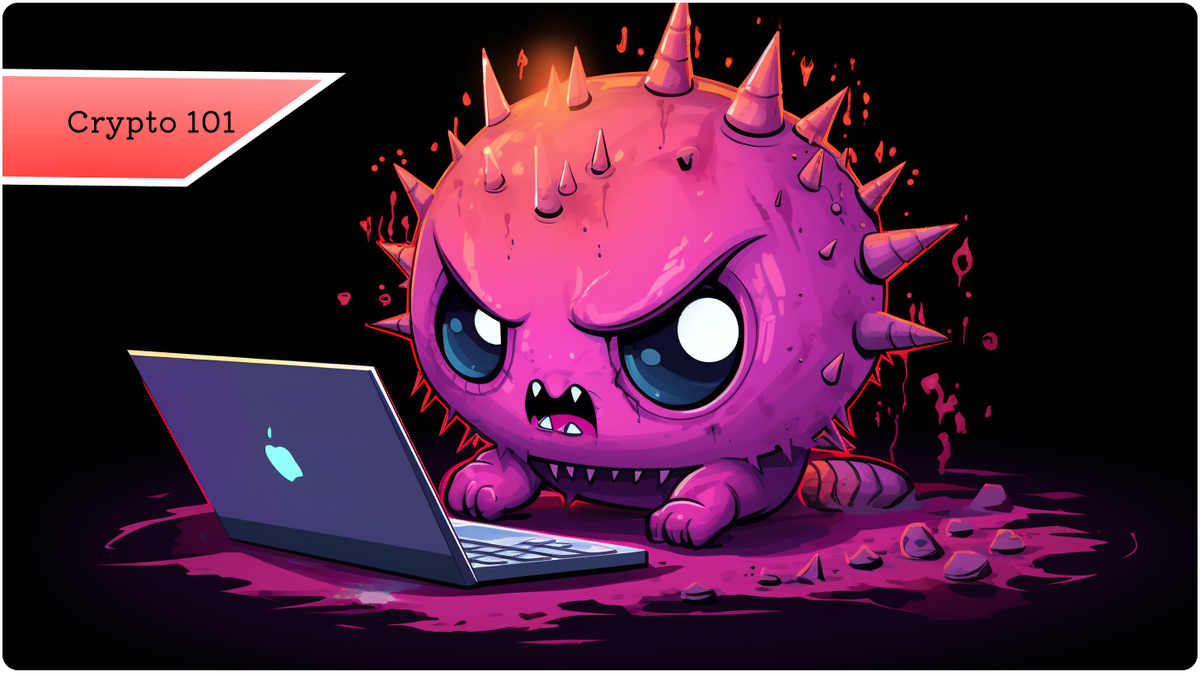Spoiler Alert: Every single one of these issues is preventable by the user...
Jump to:
- I don't see my assets in the wallet
- My wallet was phished/hacked
- I sent my assets to the wrong address
- I can't send transactions
- I can’t find or access my wallet/ I'm seeing wrong addresses
Humans are famously bad at learning from others’ mistakes, and we get it. Life is busy and full of information; it can be hard to pay attention to warnings when the danger is not happening directly to you right now.
Still, it’s important to understand that these issues can and do occur every single day, they can lead to loss of assets, but they can be avoided with just a bit of caution.
One of the best ways to learn is through repetition, so we’ve put together a list of top five issues that are most commonly addressed by our support team, and how they can be resolved or prevented.
Read through these cautionary tales with a sense of urgency and respect, because sooner or later one of these situations can be relevant to you. How catastrophic or minor that event will be in your case depends in large part on your foresight.
Allow us to present – absolutely free and accurate foresight, courtesy of MEW support!
I don’t see my assets in the wallet
Contrary to the initial panicked reaction, this does not usually mean that assets are missing. Most of the time, it's a misunderstanding or interface issue.
Prevention:
If you want to be crystal clear on what's happening with your crypto assets at all times, you must understand that there are many different blockchain networks and hundreds of thousands of tokens. Wallets may not support every single token out there, or they may not show everything automatically. Before sending assets to a wallet, make sure you know that it supports your coins. Even when it does, sometimes you will need to tweak your interface setup.
Solution:
The first step when you don't see your assets in the wallet is heading to a blockchain explorer for an accurate view of your holdings. Blockchain explorers, like ethVM, can show you a complete overview of your assets at a specific wallet’s address (0x…).
A wallet interface can have errors that prevent it from displaying balances correctly. Checking explorers, on the other hand, can remove any doubts you have about your wallet’s balances. If it’s not showing there, you don’t have it. (Keep in mind that every chain has its own block explorer – for example, BSC transactions and balances will show on BSCscan, and Polygon transactions and balances on Polygonscan.)
MEW Mobile, MEW Portfolio, and Enkrypt browser wallet are all multichain wallets, so they will show crypto on a variety of networks including Ethereum, Arbitrum, Polygon, BNB Smart Chain, and many others. If you're not seeing the expected token balance on the wallet, make sure that you are switched to the correct network. When using a block explorer, double-check the address you’re viewing is the same as the address you are looking at in the wallet.
My wallet was phished / hacked
If you see transactions out of your wallet that you didn't make, your wallet keys must have been compromised and there is nothing that can be done except learning some important lessons for the future.
Solution:
Unfortunately, in these cases, nothing can be done – which is why prevention is so important!
Prevention:
Best and Thorough Security Practices!!!
As wallet interfaces improve and the community becomes more engaged, instances of users reporting their assets were phished or hacked have gone down considerably. However, where there is money, there will always be people looking to steal it, and crypto is no exception.
Sadly, most of the time there is nothing that can be done for lost assets. The Ethereum blockchain is maintained in a decentralized fashion, so that each user has complete control and sole anonymous access to their assets. This means that there is no way to reverse transactions, and we can't look up the IP address of a phisher or determine ownership of any wallet address.
There is a multitude of ways that a wallet can get phished or hacked, but when it comes to non-custodial wallets like MEW, it's nearly always because the user revealed their secret wallet information themselves – albeit scammers can be extremely inventive and subtle in getting users to do so.
The most common way for users to lose their assets is by entering their private information – private keys, mnemonic phrase (also known as recovery or seed phrase), and keystore files – directly into a scam website or giving it to a fake ‘support’ representative via messages, emails, and phone calls.
Another classic is the “send us ETH and get double ETH back” approach, or the “give us your private key to get free tokens dropped to your address.” In the history of the world, no one has ever given something away for nothing. Crypto has not changed those rules.
Phishing tactics are rampant and constantly evolving – it’s hard to keep track of all the different methods used. Again, the most important thing to remember – never ever give or show your private key or phrase to anyone, and don't use them directly online.
For the highest security in managing crypto, it’s suggested that you purchase a hardware wallet. They start at $50 and offer the kind of security that makes it almost impossible to phish or hack your assets (unless you give away your phrase). Nothing can excuse you from staying attentive, skeptical, and vigilant, but hardware wallets relieve some of that burden by making you safer in your online blockchain interactions.
For the best security in a mobile wallet, get MEW Mobile app. It keeps your information secure within the smartphone's local storage, provides security comparable to a hardware wallet, and can be used together with MEW Portfolio for extended functionality. The only information you have to keep track of is your recovery phrase, which is meant for back-up and restoration purposes only (keep it written down in a safe place and never share it).
Losing assets is very hard and discouraging, and we are sorry to see anyone go through the experience. That's why we recommend reading our best tips on avoiding phishing right now!
I sent my assets to the wrong address
All transactions on the blockchain are final, and unfortunately assets can't be returned, but there are ways to prevent this from happening again.
Solution:
There is nothing that can be done about sending to the wrong address, unless you have incredible luck and chance upon an active wallet with an honest owner who will realize a mistake was made and send your assets back to you (chances of this are astronomically low).
Prevention:
Transactions on the blockchain can't be frozen or reversed due to its decentralized and immutable properties. Assets sent to the wrong address are lost forever. This is an easy mistake to make, as each Ethereum address is 42 characters long and just one wrong letter results in a completely different, often unused wallet.
One way of making this process much easier and more foolproof is through blockchain domains, like the ENS (Ethereum Naming Service). Domains are designed to assign plain text names to addresses: for example, “username.eth” where ‘username’ is chosen by the person registering the domain, based on availability. It’s like an email address for your assets, so that people who send you money can type in this easy-to-remember name instead of a cryptic 42 character Ethereum address.
You can register an ENS domain with MEW Portfolio, and send to domain names from MEW and Enkrypt. If you get all of your friends and colleagues/partners to register their domains too, you'll be making the entire ecosystem more secure and none of you will have to worry about wrong addresses again.
In the meantime, the best line of defense against sending to wrong addresses is double and triple checking your transaction details before confirming.
MEW Mobile makes sending easy by letting you scan a QR code of the destination address and keeping track of addresses you've used before. On MEW Portfolio, you can save addresses that you use frequently in your 'Contacts' list, and quickly select them from a dropdown on Send and Swap pages. You can also use our blockchain explorer ethVM to make a list of Favorite addresses, for quick access to copy and paste.
An important detail: sending assets directly to a contract address (like an address that was used to establish a token) will usually result in the permanent loss of your assets. That's why both MEW Portfolio and MEW Mobile wallet will show you an alert when an address you entered in the 'To' field is a contract address. There are exceptions to this rule, such as with smart contract wallets and exchanges. Just make sure that if you are sending to a contract, you know for certain that's how it's supposed to be.
I can’t send transactions
If you can't seem to get your assets out of the wallet, it's not that MEW or Ethereum is 'down'. Usually, it's a matter of providing the right conditions or checking your assets on the blockchain.
Prevention:
Before interacting with Ethereum, keep in mind that all transactions require gas paid in ETH, while other blockchains like BNB Smart Chain or Polygon will have their own gas-paying coins. Also, remember that direct transactions between incompatible blockchains, like Ethereum and Bitcoin or Ethereum and Dogechain, are not possible. You can't send assets from one to the other, though you can use something called bridging to transfer them.
Solution:
The number one reason users cannot send their transactions boils down to one thing - gas, the blockchain network fee. Gas is the fuel that makes all of Ethereum and similar blockchains run. It’s required with every single transaction, it’s paid in the main currency of the blockchain (ETH for Ethereum), and it can vary widely depending on network conditions which dictate gas prices.
Every action you make on the Ethereum blockchain is a transaction. Even if you’re trying to swap tokens for ETH, you will still need at least a little ETH at the same address where your tokens are to make the swap.
If you are using alternative smart contract blockchains in MEW, they will have their own currency for gas: for example, on BNB Smart Chain it's BNB and on Polygon it's POL.
Another reason transactions can stumble is incompatibility between blockchains. If an ERC20 token has forked or moved to mainnet (launched its own coin on a completely separate blockchain), the new currency will not be compatible for sending and receiving on the Ethereum network. Users will often try to send their old tokens to the new address type, but will be puzzled by the requirement of a ‘Memo’ or get an ‘Invalid address’ error. ERC20 tokens can only be sent to other Ethereum addresses which begin with 0x.
Generally, big exchanges like Binance offer support for token swaps from ERC20 to mainnet coins. You may be able to send your tokens to an Ethereum address on Binance, and they will deposit the same amount of the new coins into the new blockchain’s wallet address in your Binance account.
There are hundreds of thousands of tokens out there, so it’s hard for us, or any Ethereum interface, to have up-to-date information of all of them. You must keep track of your own token investments to see if they are planning any transitions to a mainnet blockchain.
I can’t find or access my wallet; I’m seeing unfamiliar wallet addresses
There are many platforms for generating a crypto wallet and many different ways of doing it. If you don't check all your wallets on a regular basis, you can forget how you accessed the wallet, or the platform interface can change and confuse you.
Prevention:
When you create your wallet, be very careful to note all wallet information, including derivation path and public addresses used. Make sure you write down your seed or recovery phrase in a safe location and verify that the phrase is correct (by resetting and restoring your wallet with that phrase) before sending any assets to the wallet. Keep careful track of all various wallets created and check on them frequently.
Solution:
The 'lost wallet' issue takes many forms, depending on the method of access used.
Let's start with hardware wallets: they are very secure and reliable, and they will always bring you back to the same generated addresses, as long as the seed phrase and the derivation path is correct.
If you connect with your hardware wallet to MEW and don't see the address you are looking for, the first thing to do is check the derivation path you’re connected through. Some hardware wallets, like Ledger, take a different path than the standard. In the MEW Portfolio interface, you can check your derivation path on the same screen where you choose the address to interact with. By clicking through different paths, you might see your familiar addresses.
Also keep in mind that some hardware wallets will let you add a passhprase/extra word to the seed phrase. Using a passphrase will lead to a different set of addresses than those generated by the phrase alone. Usually, finding the correct derivation path and remembering whether a passphrase was added will resolve wrong addresses with hardware wallets.
This is assuming that you can access the hardware wallet at all. Sometimes bugs or outdated firmware can cause your hardware wallet to stall or error out of the access screen. Most of the time, these scenarios can be fixed by making sure that your hardware wallet has all the latest firmware updates, it’s not open in some other software at the time of access, you’ve got any pop-up blockers disabled, and the MEW Portfolio interface has been refreshed to its most current version.
If you're using a browser extension web3 wallet to connect, you may need to change the address you are connecting with in the extension before you can interact with it in MEW Portfolio.
If you’re using a private key for access, a change in one single character will result in a completely different wallet address. The best practice for this is double checking your key. No one can recover this key for you, so it’s in your hands.
Keystore files require a password to unlock, and they always point to the same address. Keystore files are basically just encrypted private keys, so these two points of access are closely tied. Odds are if you have a private key, there’s probably a keystore file on your computer. If you’ve lost your private key, you can try searching for files starting with ‘UTC’ and if you find one, try using it for access together with any passwords that you might have used. You may get lucky!
Then there is direct access by mnemonic phrases (different from a hardware wallet or MEW Mobile wallet in that there is no hardware device involved, just the phrase). To refresh, the phrases are lists of 12 to 24 words that may or may not include an extra 13th / 25th word as a password. Where you made the phrase is what determines if the password is necessary or not. Most phrases do not require an extra word as a password, so if you’re including it, that’s likely why you’re seeing different addresses. Try excluding (or including) a password to see a different set of addresses.
If your phrase is not accepted at all, it’s likely you’re misspelling a word or putting them in the wrong order. Reference the list of words used in mnemonic phrases for any possible spelling errors. You may also want to try entering your phrase words into the same interface you received them from (hardware wallet, MEW Mobile, Enkrypt), rather than putting them directly into the MEW Portfolio access interface (which is not recommended in the first place).
For even more tips on troubleshooting wrong addresses with phrases, see this article:

So there you have it!
These 5 issues cover a substantial part of MEW support inquiries! Preventing them does not require too much effort or cost – just some time to gain an understanding of how blockchain and wallets work.
More help with common issues
Trying to recover an old Ethereum wallet that you haven't accessed in a very long time? Find help here:

Concerned about falling for a scam? See this series of articles discussing the most common ways users get tricked by scammers:



Download MEW 📲 | Follow us on Twitter 🐦 | Check out our blog 📰



